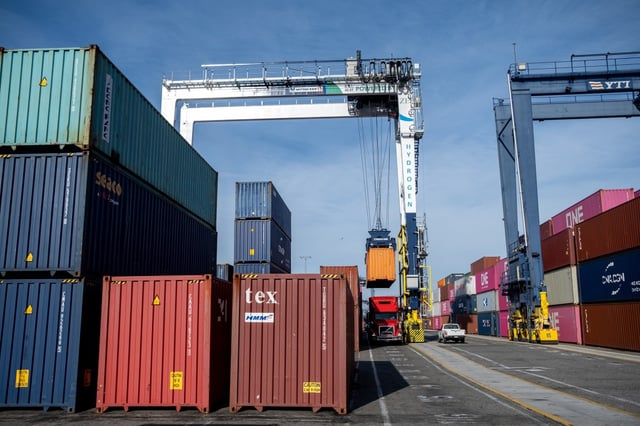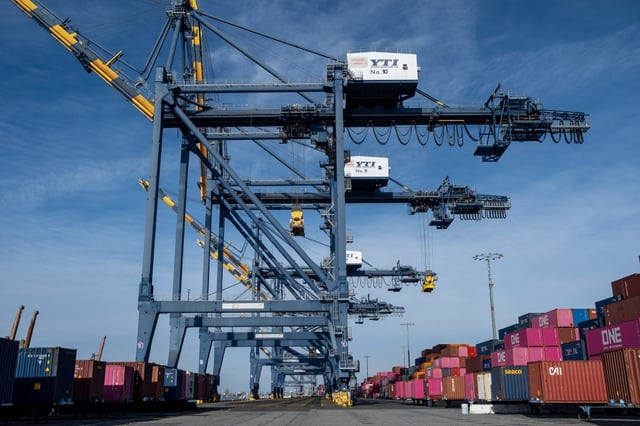Overview
- The ports of Los Angeles and Long Beach contribute about 20% of the region's nitrogen oxides emissions, making them the largest single sources of air pollution in Southern California.
- The South Coast Air Quality Management District has proposed requiring the ports to submit electrification plans by 2027, aiming to transition to zero-emission technologies by 2030.
- Environmentalists argue the proposed measures lack enforceable targets and urgency, especially with cargo volumes projected to double by 2040.
- Even if the ports achieve their zero-emission goals, smog-forming emissions would only decrease by 14%, according to air quality officials.
- The estimated cost of converting the Port of Long Beach alone to zero emissions exceeds $1 billion, highlighting significant financial challenges.

